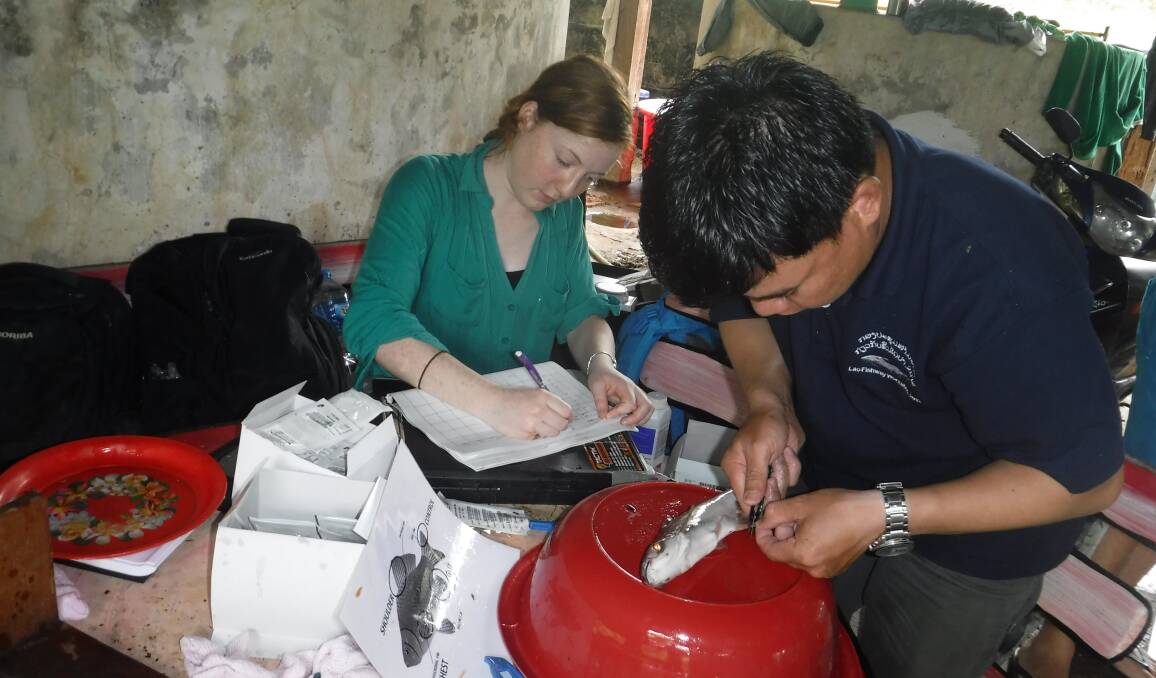
Studying science at Charles Sturt University has led Bettina Grieve on a two-month adventure tagging fish in the Mekong River this summer.
Subscribe now for unlimited access.
$0/
(min cost $0)
or signup to continue reading
She recently graduated in Albury with a Bachelor of Science, and her research in Laos looked at the effectiveness of microchip tagging on two species of fish: the striped catfish and goldfin tinfoil barbs.
“The Mekong River is experiencing unprecedented development in hydropower,” Ms Grieve said.
“Fishways have been proposed as a method to mitigate the impacts of this on fish migration and biodiversity, so tagging is a way of measuring if the strategy is working.”
Microchip tagging is already used in Australia to measure fish migration, but this was the first time the technology had been assessed on the two Mekong native fish species.
Ms Grieve said she believed she needed to figure out the best place on the fish to apply the device: in the chest, gut, or shoulder. But she discovered it didn’t matter where she tagged the fish with a microchip, and that both species usually survived.
“The Mekong River is one of the most biologically diverse river systems in the world and is renowned for its fish fauna, home to an estimated 1200 species of tropical fish,” Ms Grieve said.
“This study showed that tags are an effective method to use on selected Mekong species and could form the basis for migration studies in the future.”
Along with helping to understand fish migration in the Mekong, Ms Grieve said the international research project had been personally rewarding to her as a young scientist.
“I learnt how to effectively tag fish in hot and humid conditions, working in teams where not everyone is from the same culture or speaks the same language,” she said.
“It’s taught me how essential international collaboration is on improving global understanding of big issues such as the lack of information on fish movement and migration in the Mekong.”
And Ms Grieve has now snagged a position in Sydney Water's four-year graduate program.
“I hope to use my international experience and new found knowledge of fish and tagging to, one day, improve Australian inland fisheries,” she said.

